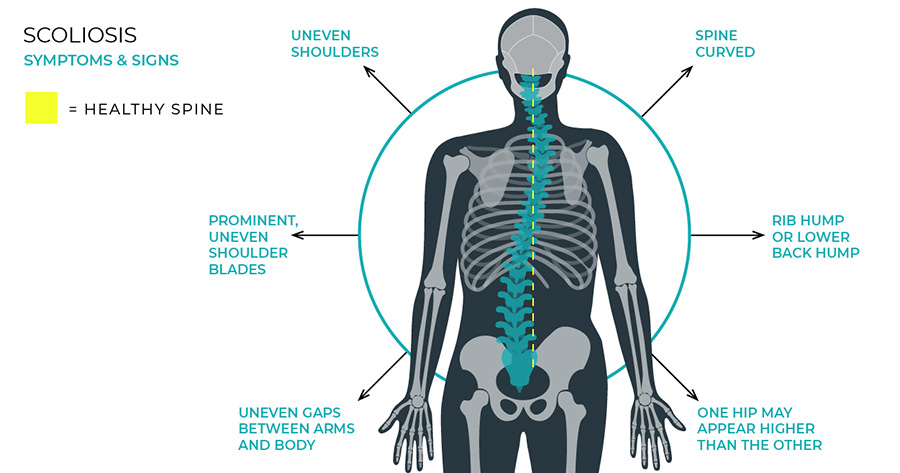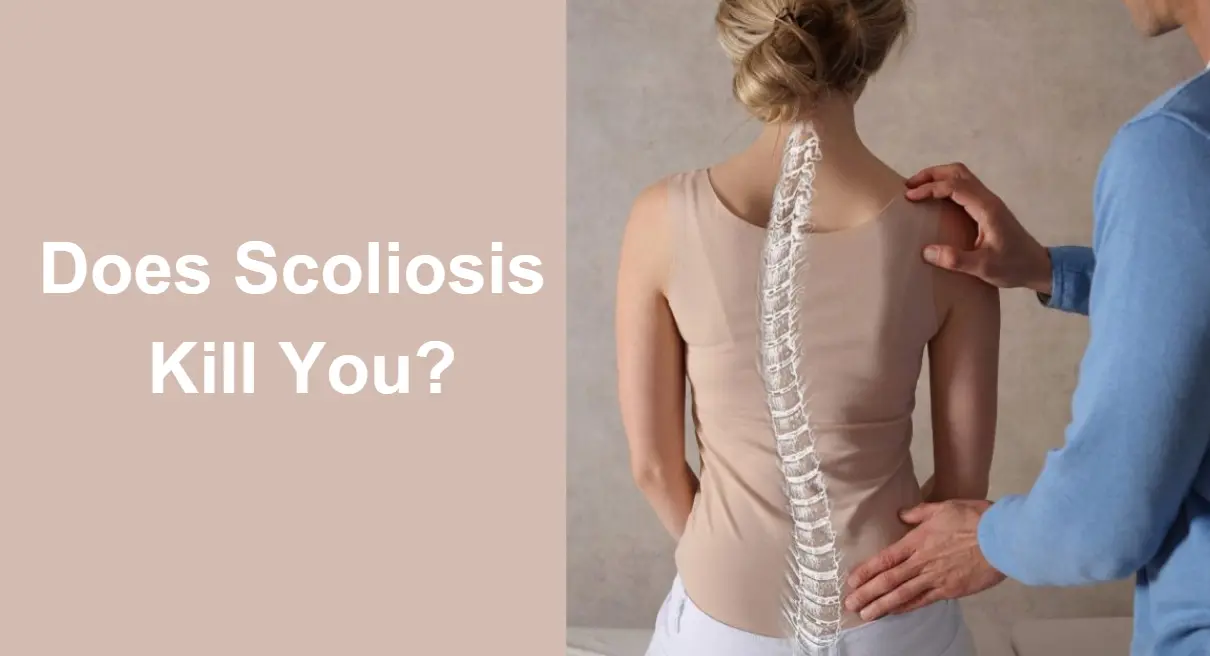Scoliosis is a medical condition that affects the curvature of the spine, causing it to curve sideways. While many people may think of scoliosis as a minor issue, it is important to understand the potential impact it can have on a person’s health. In this article, we will explore the causes, symptoms, and types of scoliosis, debunk the myth of scoliosis being fatal, identify life-threatening complications associated with scoliosis, evaluate the respiratory, cardiac, and neurological risks, assess the risks and benefits of surgical interventions, discuss non-surgical treatment options, emphasize the importance of early detection and intervention, and provide coping strategies and supportive care for individuals living with scoliosis.

Defining Scoliosis: Causes, Symptoms, and Types
Scoliosis can be caused by various factors, including congenital disabilities, neuromuscular conditions, or idiopathic reasons, which account for about 80% of cases. Idiopathic scoliosis typically develops during adolescence and affects girls more frequently than boys. The exact cause of idiopathic scoliosis is still unknown, but it is believed to involve a combination of genetic and environmental factors.
Symptoms of scoliosis can vary depending on the severity of the curvature. Mild cases may not cause any noticeable symptoms, while more severe cases can lead to visible deformities, uneven shoulders or hips, and back pain. It is important to note that scoliosis does not typically cause pain, but the associated muscle imbalances and strain can lead to discomfort.
There are different types of scoliosis, including adolescent idiopathic scoliosis, congenital scoliosis, neuromuscular scoliosis, and degenerative scoliosis. Adolescent idiopathic scoliosis is the most common type and typically develops during puberty. Congenital scoliosis is present at birth and is caused by abnormal spinal development. Neuromuscular scoliosis is associated with conditions such as cerebral palsy or muscular dystrophy. Degenerative scoliosis occurs in older adults due to the degeneration of the spine.

Debunking the Myth: Can Scoliosis Be Fatal?
Contrary to popular belief, scoliosis itself is not fatal. The curvature of the spine does not directly cause death. However, if left untreated, severe scoliosis can lead to life-threatening complications, which we will explore in the following sections.
Identifying Life-Threatening Complications Associated with Scoliosis
While scoliosis itself may not be fatal, it can lead to various complications that can have serious health implications. These complications primarily arise from the pressure exerted on the organs and structures surrounding the spine due to the abnormal curvature.
Respiratory Implications: How Scoliosis Affects Breathing
One of the most significant concerns associated with scoliosis is its impact on respiratory function. Severe spinal curvature can restrict lung expansion, leading to reduced lung capacity and impaired breathing. This can result in shortness of breath, fatigue, and decreased physical endurance. In severe cases, respiratory failure can occur, requiring medical intervention.
Cardiac Concerns: Evaluating the Impact of Scoliosis on the Heart
Scoliosis can also affect the heart and cardiovascular system. As the spine curves, it can compress the chest cavity, limiting the space available for the heart and lungs. This compression can lead to cardiac abnormalities, such as arrhythmias, decreased cardiac output, and even heart failure. Regular monitoring of cardiac function is crucial for individuals with severe scoliosis.
Neurological Risks: Nerve Damage and Spinal Cord Compression
In some cases, scoliosis can lead to nerve damage and spinal cord compression. As the spine curves, it can put pressure on the nerves and spinal cord, leading to pain, numbness, weakness, and even paralysis. This is more common in cases of severe scoliosis or when the curvature affects the thoracic spine. Prompt medical intervention is necessary to prevent permanent neurological damage.
Surgical Interventions: Assessing the Risks and Benefits
Surgery is often considered for individuals with severe scoliosis to correct the curvature and prevent further complications. However, like any surgical procedure, it carries risks. Potential complications include infection, bleeding, nerve damage, and failure of the implanted hardware. The decision to undergo surgery should be carefully evaluated, taking into account the severity of the scoliosis, the potential benefits, and the individual’s overall health.
Non-Surgical Treatment Options: Managing Scoliosis without Surgery
Not all cases of scoliosis require surgical intervention. Non-surgical treatment options, such as bracing and physical therapy, can be effective in managing mild to moderate cases of scoliosis. Bracing aims to prevent further progression of the curvature, while physical therapy focuses on strengthening the muscles surrounding the spine and improving posture. These conservative approaches can help alleviate symptoms and improve quality of life.

Early Detection and Intervention: Importance of Timely Diagnosis
Early detection and intervention are crucial in managing scoliosis effectively. Regular screenings during adolescence can help identify scoliosis at an early stage when conservative treatments are most effective. Timely diagnosis allows for early intervention, preventing the progression of the curvature and reducing the risk of complications.
Living with Scoliosis: Coping Strategies and Supportive Care
Living with scoliosis can be challenging, both physically and emotionally. It is important for individuals with scoliosis to adopt coping strategies and seek supportive care. Physical therapy, exercise, and maintaining a healthy lifestyle can help manage symptoms and improve overall well-being. Additionally, joining support groups or seeking counseling can provide emotional support and guidance.
Conclusion: Empowering Individuals with Scoliosis through Education
In conclusion, while scoliosis itself is not fatal, it can lead to life-threatening complications if left untreated. Understanding the causes, symptoms, and types of scoliosis is essential in recognizing the potential risks associated with the condition. Respiratory, cardiac, and neurological complications can arise from severe scoliosis, emphasizing the importance of early detection and intervention. Surgical interventions may be necessary in severe cases, but non-surgical treatment options can also be effective. By empowering individuals with scoliosis through education, we can ensure they receive the necessary support and care to manage their condition and lead fulfilling lives.
References
- Weinstein, S. L., Dolan, L. A., Cheng, J. C., Danielsson, A., & Morcuende, J. A. “Adolescent idiopathic scoliosis.” The Lancet. 2008;371(9623):1527-1537. doi: 10.1016/S0140-6736(08)60658-3
- Negrini, S., Aulisa, A. G., Aulisa, L., et al. “2011 SOSORT guidelines: Orthopaedic and rehabilitation treatment of idiopathic scoliosis during growth.” Scoliosis. 2012;7(1):3. doi: 10.1186/1748-7161-7-3
- Lonstein, J. E. “Idiopathic scoliosis.” Pediatrics. 1994;94(5):700-703. PMID: 7936850
- Kaspiris, A., Grivas, T. B., Weiss, H. R., & Turnbull, D. “Health-related quality of life in patients with adolescent idiopathic scoliosis treated with bracing: A review.” Journal of Back and Musculoskeletal Rehabilitation. 2012;25(4):219-226. doi: 10.3233/BMR-2012-0324
- Kotwicki, T., Negrini, S., Grivas, T. B., et al. “Methodology of evaluation of morphology of the spine and the trunk in idiopathic scoliosis and other spinal deformities: 6th SOSORT consensus paper.” Scoliosis. 2009;4:26. doi: 10.1186/1748-7161-4-26
- Ogon, M., Giesinger, J. M., Behensky, H., et al. “Health-related quality of life in idiopathic scoliosis after treatment: A comparison between brace and surgical management.” The Bone & Joint Journal. 2011;93-B(8):975-980. doi: 10.1302/0301-620X.93B8.26095
- Daniels, A. H., Bess, S., Line, B., et al. “Coronal plane spinal alignment: Classification, indications, and outcomes.” Spine Deformity. 2014;2(4):300-309. doi: 10.1016/j.jspd.2014.04.007
- Green, B. N., Johnson, C., & Moreau, W. J. “Is there a relationship between idiopathic scoliosis and the practice of chiropractic? A discussion on theoretical insights and hypotheses.” Chiropractic & Osteopathy. 2006;14:15. doi: 10.1186/1746-1340-14-15
- Weiss, H. R., & Goodall, D. “The treatment of adolescent idiopathic scoliosis (AIS) according to present evidence: A systematic review.” European Journal of Physical and Rehabilitation Medicine. 2008;44(2):177-193. PMID: 18418377
- Wajchenberg, M., Santos, F. P., & Puertas, E. B. “Biomechanics of scoliosis: What do we really know?” World Journal of Orthopedics. 2015;6(5):435-444. doi: 10.5312/wjo.v6.i5.435
